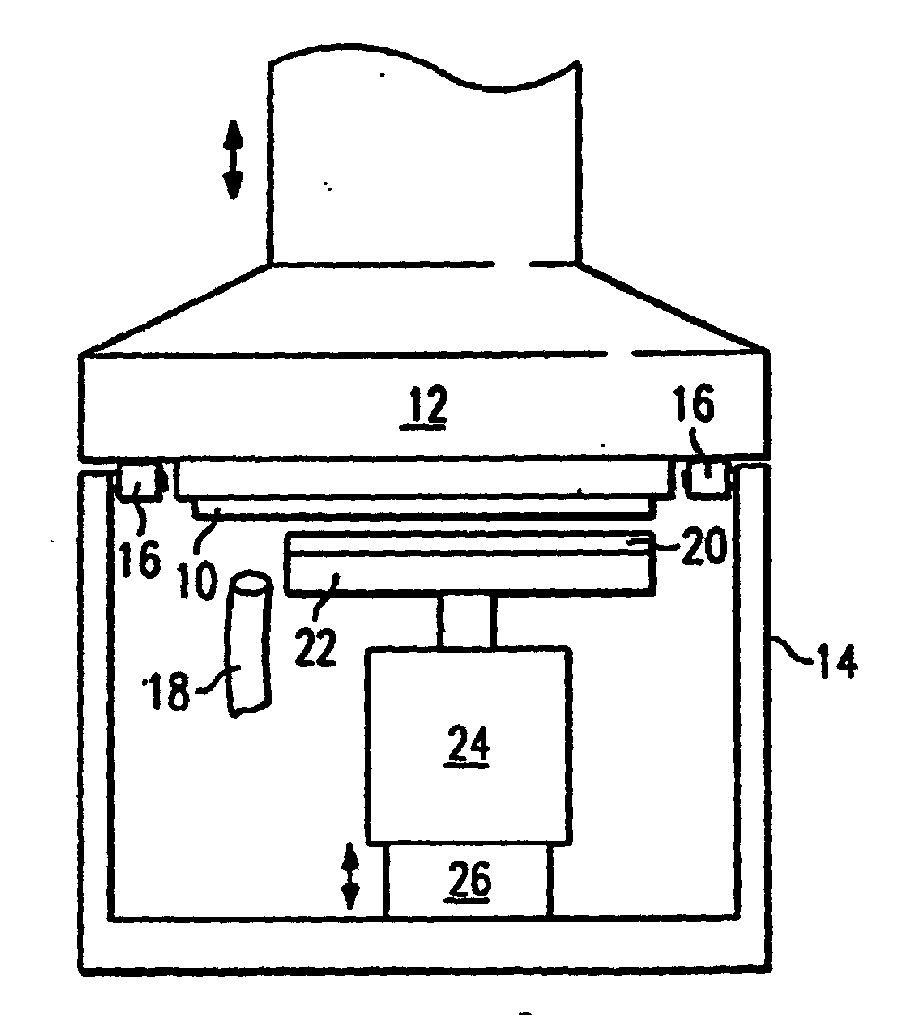(57) A method and apparatus for removing particulate contaminants from a semiconductor
wafer are disclosed. A wafer 10 is held in a wafer holder 12 at cleaning station 14.
Cleaning station 14 has a rinse fluid supply system 18 which supplies, e.g. deionized
water, to the wafer surface during particle removal. A cleaning pad 20 is mounted
on a platen 22, substantially in the plane of wafer 10. Platen 22 is coupled to a
drive mechanism 24, which may for example be an electric motor, and drive mechanism
24 is coupled to station 14 by an engagement mechanism 26 which provides vertical
displacement to engage pad 20 and wafer 10 for particle removal, and also provides
a controlled pad contact pressure during particle removal. In operation, rinse fluid
from 18 is supplied to slowly rotating wafer 10, while pad 20 is rotated, preferably
at 200 to 600 rpm, and contacted with wafer 10. High pad speed appears to be particularly
beneficial to cleaning, with pad contact pressure and contact time apparently being
secondary effects which at least decrease wafer-to-wafer variances in the cleaning
process.
|

|
